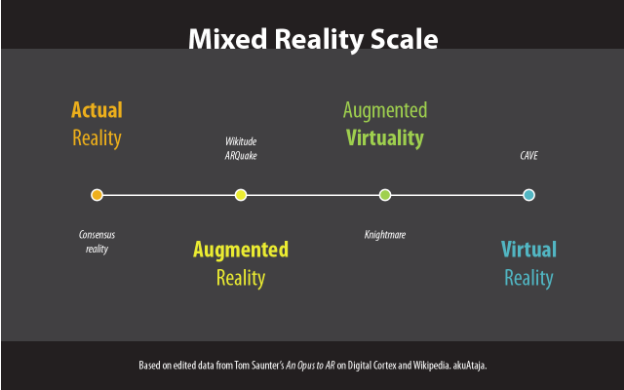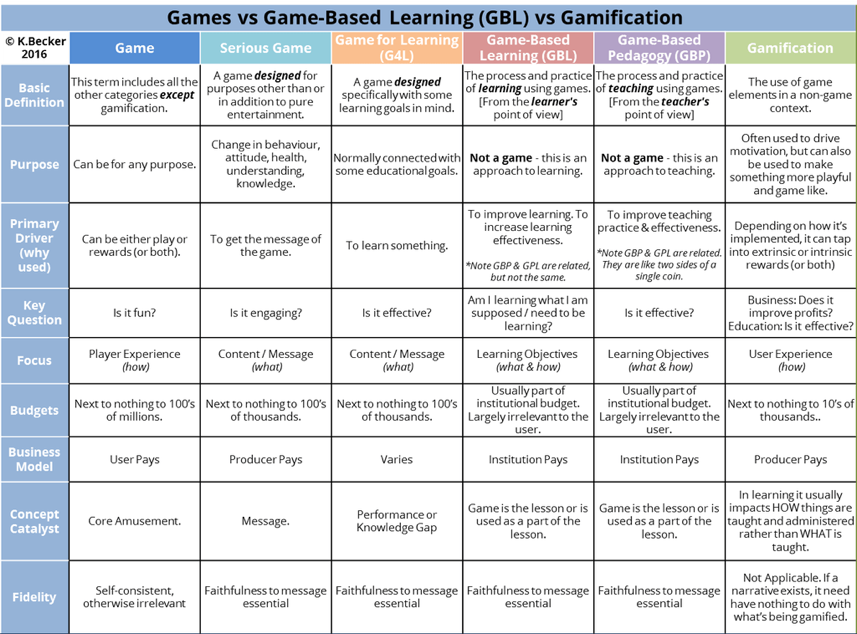Archive of ‘gamification’ category
social media transform education
++++++++++
more on social media in education in this IMS blog
https://blog.stcloudstate.edu/ims?s=social+media+education
parents wary of VR
Your kids and virtual reality: What parents should know
Jim Steyer, founder of Common Sense Media https://www.commonsense.org/education/
VR also has the potential to encourage empathy among small children, experts say, because it builds bonds with virtual characters and settings, though parents surveyed by Common Sense remain skeptical.
+++++++++++++++
more on VR in education in this IMS blog
https://blog.stcloudstate.edu/ims?s=virtual+reality+education
storytelling AR and VR tools
Unleash the Power of Storytelling With These New AR and VR Tools
By Jaime Donally (Columnist) Apr 4, 2018
Teachers can bring VR stories into the classroom in many different ways for meaningful learning experiences. Imagine a scavenger hunt where students narrate a story based on what they find. Or consider using objects they see to identify vocabulary words or recognize letters. Students should have purpose in their viewing and it should directly connect to standards.
Starting with virtual reality, stories in apps such as Google Spotlight Storiesand YouTube 360 videos have been popular from the start.
Similar to the new movie, Ready Player One, they provide an intense experience where the viewer feels like they are in the center of the story.
Using a mobile device or tablet, the student can start the story and look around the scene based on their interest, rather than the cameras focus. New apps such as Baobab VR have continued to appear with more interactions and engagement.
A creative way to have your students create their own virtual stories is using the app Roundme. Upload your 360 image and add directional sound, links and content. Upload portals to walk the viewer into multiple scenes and then easily share the stories by link to the story.
Newer augmented reality apps that work with ARKit have taken another approach to storytelling. Augmented Stories and My Hungry Caterpillar.Qurious, a company that is working on a release blending gaming, making and storytelling in one app.
Storyfab, turns our students into the directors of the show
A new AR book, SpyQuest, has moved the immersive experience a big step forward as it helps define the story by bringing the images to life. Through the camera lens on a device, the stories make students the agents in an adventure into the world of espionage. The augmented reality experiences on the images use the accompanying app to scan the scene and provide further insight into the story.
+++++++++++++
more on storytelling in this IMS blog
https://blog.stcloudstate.edu/ims?s=digital+storytelling
more on VR and storytelling in this IMS blog
https://blog.stcloudstate.edu/ims?s=virtual+reality+storytelling
IM 554 discussion on GBL 2018
Course title: IM 554 Developing Skills for Online Teaching and Learning
Topic for this week: Game-based learning, Virtual Reliability, and Augmented Reality
Audience: IM Graduate students working for K12 schools or in business
7:20 to 8:20 PM, Thursday, March 29. Instructor: Yun Claire Park
- What did we learn from last year: https://blog.stcloudstate.edu/ims/2017/02/22/im554-discussion-gbl/
- definitions and delineation of gaming and gamification
- the connection to BYOD
- What do we want to learn this year/today?
- more on gaming and gamification
- more on realities
- what is VR – virtual reality
Virtual reality (VR) is “a computer technology that uses virtual reality headsets or multi-
projected environments, sometimes in combination with physical environments or props, to
generate realistic images, sounds and other sensations that simulate a user's physical presence in a virtual or imaginary environment” (“Virtual Reality” n.d.) VR is accomplished by using headsets, such as HTC Vive, Oculus Rift, PlayStation VR, and Samsung Gear VR. The use of the headsets creates (and enhances) digitally constructed “reality,” thus providing excellent opportunities for simulations and learning through training and practice. Among a myriad of other definitions, Noor (2016, 34) describes Virtual Reality (VR) as “a computer-generated environment that can simulate physical presence in places in the real world or imagined worlds. The user wears a headset and through specialized software and sensors is immersed in 360- degree views of simulated worlds.”
from our book chapter: Video 360: The new type of visualization to help patrons enter the era of VR, AR and Mixed Reality (under review).
what is AR – augmented reality
“Augmented Reality (AR) supplements the physical environment with computer-generated sensory input such as sound, video, graphics, or other useful information – essentially overlaying the digital information on top of the physical world. Some consider the smartphone popular game “Pokemon Go” a form of consumer AR.”
from my book Chapter 12: VR, AR and Video 360: A Case Study Towards New Realities in Education by Plamen Miltenoff (under review)
what is MR – mixed reality
https://commons.wikimedia.org/wiki/Category:Mixed_reality#/media/File:Mixed_Reality_Scale.png
- Video 360
- how to create non-expensive VR = Video 360 degrees
A two-dimensional flat frame
Consumer types of cameras
++++++++++++++
More information on GBL in this IMS blog:
https://blog.stcloudstate.edu/ims?s=%22game-based+learning%22
more on VR in education in this IMS blog:
https://blog.stcloudstate.edu/ims?s=virtual+reality+education
more on AE in this IMS blog
https://blog.stcloudstate.edu/ims?s=augmented+reality
T4TL games and VR
Recording of today’s session:
https://minnstate.adobeconnect.com/p0igkjuoc24c
Matt Julius, Mark Gill, Bill Gorsica present games and VR for education
+++++++++++
more on virtual reality in this IMS blog
https://blog.stcloudstate.edu/ims?s=virtual+reality
more on games in this IMS blog
https://blog.stcloudstate.edu/ims?s=gaming
Library Technology Conference 2018
Plamen Miltenoff and Mark Gill presentation: http://sched.co/E8l3
#LTC2018 #VRlib – join us for a discussion
Keynote Speaker: Sarah T. Roberts
Commercial Content Moderation:
Sarah Roberts talk about psychological effects of working at Caleris; it resembles the effect of air strikes on the drone pilots
Alex Kent
Drupal based. Google Analytics like. Bookmarks. objects list can be shared through social media, email, etc. Pachyderm used to have timeline like Islandora. still images, audio, video
Library as Publisher: OpenSUNY Textbooks
Leah Root
http://sched.co/D7iS
Notes from LIBTECH 2017: https://blog.stcloudstate.edu/ims/2017/03/07/library-technology-conference-2017/
Chart games gamification GBL
thank you, Rhonda Huisman
++++++++
more on games in this IMS blog
https://blog.stcloudstate.edu/ims?s=games
gamification
https://blog.stcloudstate.edu/ims?s=gamification
Teach like a pirate
Burgess, D. (2012). Teach like a pirate: Increase student engagement, boost your creativity, and transform your life as an educator. San Diego, Calif.: Dave Burgess Consulting, Inc..
TeacherGaming
TeacherGaming Raises $1.6M to Grow Subscription-Based Classroom Gaming Platform
Jan 30, 2018
TeacherGaming is a subscription-based suite of educational games for the classroom, ranging from $150 to $1150 per year depending on class size. The system includes lesson plans and an analytics platform for educators to track student activity and progress.
+++++++++++
More on gaming in this IMS blog
https://blog.stcloudstate.edu/ims?s=gaming
more on MInecraft in this IMS blog
https://blog.stcloudstate.edu/ims?s=minecraft



